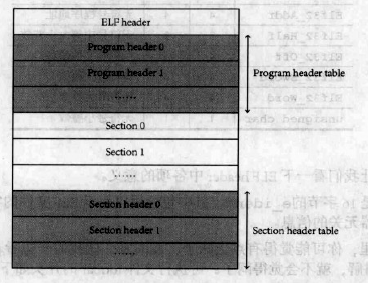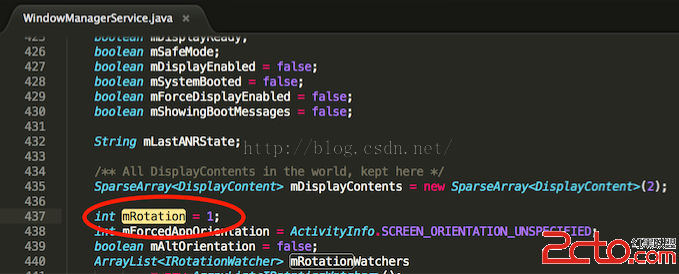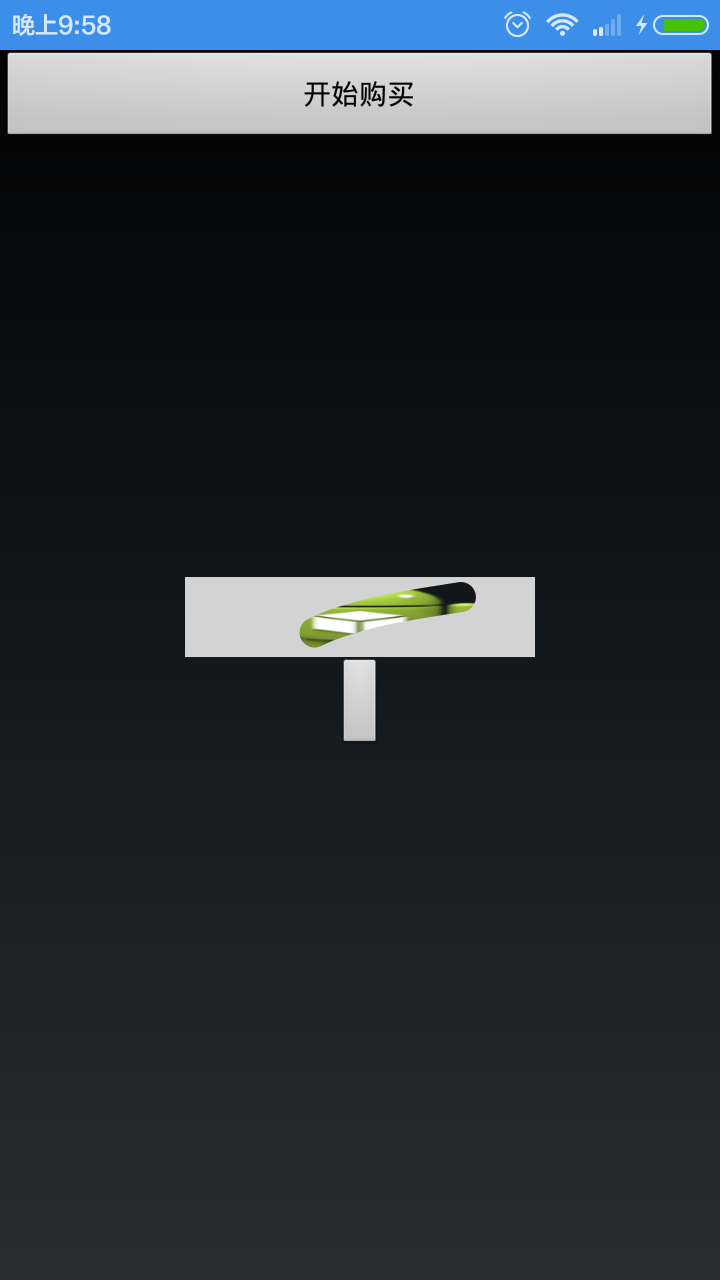編輯:關於android開發
VSYNC(Vertical Synchronization)是一個相當古老的概念,對於游戲玩家,它有一個更加大名鼎鼎的中文名字—-垂直同步。
“垂直同步(vsync)”指的是顯卡的輸出幀數和屏幕的垂直刷新率相同,這完全是一個CRT顯示器上的概念。其實無論是VSYNC還是垂直同步這個名字,
因為LCD根本就沒有垂直掃描的這種東西,因此這個名字本身已經沒有意義。但是基於歷史的原因,這個名稱在圖形圖像領域被沿襲下來。
在當下,垂直同步的含義我們可以理解為,使得顯卡生成幀的速度和屏幕刷新的速度的保持一致。舉例來說,如果屏幕的刷新率為60Hz,那麼生成幀
的速度就應該被固定在1/60 s。
VSync信號的產生在android_frameworks_native\services\surfaceflinger\DisplayHardware\HWComposer.cpp裡面定義:

bool needVSyncThread = true;
是否需要模擬產生VSync信號,默認是開啟的。
// Note: some devices may insist that the FB HAL be opened before HWC.
int fberr = loadFbHalModule();
loadHwcModule();
打開fb & hwc設備的HAL模塊。
if (mHwc->registerProcs) {
mCBContext->hwc = this;
mCBContext->procs.invalidate = &hook_invalidate;
mCBContext->procs.vsync = &hook_vsync;
if (hwcHasApiVersion(mHwc, HWC_DEVICE_API_VERSION_1_1))
mCBContext->procs.hotplug = &hook_hotplug;
else
mCBContext->procs.hotplug = NULL;
memset(mCBContext->procs.zero, 0, sizeof(mCBContext->procs.zero));
mHwc->registerProcs(mHwc, &mCBContext->procs);
}
// don't need a vsync thread if we have a hardware composer
needVSyncThread = false;
硬件VSync信號啟動,不需要軟件模擬。
if (needVSyncThread) {
// we don't have VSYNC support, we need to fake it
mVSyncThread = new VSyncThread(*this);
}
如果需要,啟動VSyncThread線程來開啟軟件模擬。
mHwc->registerProcs(mHwc, &mCBContext->procs);
hwc會產生回調:procs.vsync & procs.invalidate 信號。
void HWComposer::vsync(int disp, int64_t timestamp) {
if (uint32_t(disp) < HWC_NUM_PHYSICAL_DISPLAY_TYPES) {
{
Mutex::Autolock _l(mLock);
// There have been reports of HWCs that signal several vsync events
// with the same timestamp when turning the display off and on. This
// is a bug in the HWC implementation, but filter the extra events
// out here so they don't cause havoc downstream.
if (timestamp == mLastHwVSync[disp]) {
ALOGW("Ignoring duplicate VSYNC event from HWC (t=%" PRId64 ")",
timestamp);
return;
}
mLastHwVSync[disp] = timestamp;
}
char tag[16];
snprintf(tag, sizeof(tag), "HW_VSYNC_%1u", disp);
ATRACE_INT(tag, ++mVSyncCounts[disp] & 1);
mEventHandler.onVSyncReceived(disp, timestamp);
}
}
最終會通知mEventHandler的消息,這個handler從那裡來的呢?
void SurfaceFlinger::init(){
mHwc = new HWComposer(this,
*static_cast<HWComposer::EventHandler *>(this));
}
Yes,handler就是SurfaceFlinger,對嘛。SurfaceFlinger就是Surface合成的總管,所以這個信號一定會被它接收。
class SurfaceFlinger : public BnSurfaceComposer,
private IBinder::DeathRecipient,
private HWComposer::EventHandler
bool HWComposer::VSyncThread::threadLoop() {
{ // scope for lock
Mutex::Autolock _l(mLock);
while (!mEnabled) {
mCondition.wait(mLock);
}
}
const nsecs_t period = mRefreshPeriod;
const nsecs_t now = systemTime(CLOCK_MONOTONIC);
nsecs_t next_vsync = mNextFakeVSync;
nsecs_t sleep = next_vsync - now;
if (sleep < 0) {
// we missed, find where the next vsync should be
sleep = (period - ((now - next_vsync) % period));
next_vsync = now + sleep;
}
mNextFakeVSync = next_vsync + period;
struct timespec spec;
spec.tv_sec = next_vsync / 1000000000;
spec.tv_nsec = next_vsync % 1000000000;
int err;
do {
err = clock_nanosleep(CLOCK_MONOTONIC, TIMER_ABSTIME, &spec, NULL);
} while (err<0 && errno == EINTR);
if (err == 0) {
mHwc.mEventHandler.onVSyncReceived(0, next_vsync);
}
return true;
}
判斷系統Vsync信號開關。然後計算下一次刷新的時間點。
const nsecs_t period = mRefreshPeriod;
刷新間隔,CLOCK_MONOTONIC是從系統開機後的時間間隔(tick累加)
得到需要等待的時間sleep,和下一次vsync信號的時間點。
然後一個do while的操作,來等待信號時間點的到來。
最後,發出這個信號。
這裡還有個情況,就是一開始的地方,mEnable變量,系統可以設置enable來控制vsync信號的產生。
void HWComposer::VSyncThread::setEnabled(bool enabled)
在4.4以前,Vsync的處理通過EventThread就可以了。但是KK再次對這段邏輯進行細化和復雜化。Google真是費勁心思為了提升性能。
先來直接看下Surfaceflinger的onVSyncReceived函數:
void SurfaceFlinger::onVSyncReceived(int type, nsecs_t timestamp) {
bool needsHwVsync = false;
{ // Scope for the lock
Mutex::Autolock _l(mHWVsyncLock);
if (type == 0 && mPrimaryHWVsyncEnabled) {
needsHwVsync = mPrimaryDispSync.addResyncSample(timestamp);//mPromaryDisplays是什麼?
}
}
if (needsHwVsync) {
enableHardwareVsync();//做了什麼
} else {
disableHardwareVsync(false);//做了什麼
}
}
雖然很短,但是乍一看還是一頭霧水
mPrimaryHWVsyncEnabled是什麼時候被賦值的?
mPrimaryDispSync是什麼,addResyncSample又做了什麼?
enableHardwareVsync &disableHardwareVsync在干什麼?
要解答這些問題,就從SurfaceFlinger::init開始看

有2個幾乎一樣的DispSyncSource,它的目的是提供了Vsync的虛擬化。關於這塊的分析,可以參考Android 4.4(KitKat)中VSync信號的虛擬化
在三緩沖的框架下,對於一幀內容,先等APP UI畫完了,SurfaceFlinger再出場整合到FrameBuffer
而現在google就是讓它們一起跑起來。
然後搞了2個延時,這樣就不會有問題。對應vsyncSrc(繪圖延時) & sfVsyncSrc(合成延時)
bool EventThread::threadLoop() {
DisplayEventReceiver::Event event;
Vector< sp<EventThread::Connection> > signalConnections;
signalConnections = waitForEvent(&event);
// dispatch events to listeners...
const size_t count = signalConnections.size();
for (size_t i=0 ; i<count ; i++) {
const sp<Connection>& conn(signalConnections[i]);
// now see if we still need to report this event
status_t err = conn->postEvent(event);
if (err == -EAGAIN || err == -EWOULDBLOCK) {
// The destination doesn't accept events anymore, it's probably
// full. For now, we just drop the events on the floor.
// FIXME: Note that some events cannot be dropped and would have
// to be re-sent later.
// Right-now we don't have the ability to do this.
ALOGW("EventThread: dropping event (%08x) for connection %p",
event.header.type, conn.get());
} else if (err < 0) {
// handle any other error on the pipe as fatal. the only
// reasonable thing to do is to clean-up this connection.
// The most common error we'll get here is -EPIPE.
removeDisplayEventConnection(signalConnections[i]);
}
}
return true;
}
EventThread會發送消息到surfaceflinger裡面的MessageQueue。
MessageQueue處理消息:
int MessageQueue::eventReceiver(int /*fd*/, int /*events*/) {
ssize_t n;
DisplayEventReceiver::Event buffer[8];
while ((n = DisplayEventReceiver::getEvents(mEventTube, buffer, 8)) > 0) {
for (int i=0 ; i<n ; i++) {
if (buffer[i].header.type == DisplayEventReceiver::DISPLAY_EVENT_VSYNC) {
#if INVALIDATE_ON_VSYNC
mHandler->dispatchInvalidate();
#else
mHandler->dispatchRefresh();
#endif
break;
}
}
}
return 1;
}
如果Event的類型是
DisplayEventReceiver::DISPLAY_EVENT_VSYNC
正是我們需要的類型,所以,就有2中處理方式:
UI進程需要先准備好數據(invalidate),然後Vsync信號來了以後,就開始刷新屏幕。
SurfaceFlinger是在Vsync來臨之際准備數據然後刷新,還是平常就准備當VSync來臨是再刷新。
先來看dispatchInvalidate,最後處理的地方就是這裡。
case MessageQueue::INVALIDATE: {
bool refreshNeeded = handleMessageTransaction();
refreshNeeded |= handleMessageInvalidate();
refreshNeeded |= mRepaintEverything;
if (refreshNeeded) {
// Signal a refresh if a transaction modified the window state,
// a new buffer was latched, or if HWC has requested a full
// repaint
signalRefresh();
}
break;
}
我們來看下handleMessageRefresh:
void SurfaceFlinger::handleMessageRefresh() {
ATRACE_CALL();
preComposition(); //合成前的准備
rebuildLayerStacks();//重新建立layer堆棧
setUpHWComposer();//HWComposer的設定
#ifdef QCOM_BSP
setUpTiledDr();
#endif
doDebugFlashRegions();
doComposition(); //正式合成工作
postComposition(); //合成的後期工作
}
handleMessageTransaction在簡單判斷後直接調用handlerTransaction。
可以看到裡面的handleTransactionLocked才是代碼真正處理的地方。

這裡處理3中情況,過程類似,我們只看eTraversalNeeded這種情況。
uint32_t trFlags = layer->getTransactionFlags(eTransactionNeeded);
獲取各個layer的標志位,然後做const uint32_t flags = layer->doTransaction(0);的操作
各layer計算各自的可見區域,mVisibleRegionsDirty記錄可見區域變化。
以下代碼:
mCurrentState.layersSortedByZ
surfaceFlinger有2個記錄layer變化的全局變量
State mDrawingState; State mCurrentState;
一個記錄上一次的狀態,後者記錄當前的狀態,這樣就可以判斷layer的變化狀態。layersSortedByZ 可見,layer是通過Z-order排列的。
這個變量記錄了所有的layer。
我們來看下
uint32_t Layer::doTransaction(uint32_t flags) {
ATRACE_CALL();
const Layer::State& s(getDrawingState());
const Layer::State& c(getCurrentState());
const bool sizeChanged = (c.requested.w != s.requested.w) ||
(c.requested.h != s.requested.h);
if (sizeChanged) {
// the size changed, we need to ask our client to request a new buffer
ALOGD_IF(DEBUG_RESIZE,
"doTransaction: geometry (layer=%p '%s'), tr=%02x, scalingMode=%d\n"
" current={ active ={ wh={%4u,%4u} crop={%4d,%4d,%4d,%4d} (%4d,%4d) }\n"
" requested={ wh={%4u,%4u} crop={%4d,%4d,%4d,%4d} (%4d,%4d) }}\n"
" drawing={ active ={ wh={%4u,%4u} crop={%4d,%4d,%4d,%4d} (%4d,%4d) }\n"
" requested={ wh={%4u,%4u} crop={%4d,%4d,%4d,%4d} (%4d,%4d) }}\n",
this, getName().string(), mCurrentTransform, mCurrentScalingMode,
c.active.w, c.active.h,
c.active.crop.left,
c.active.crop.top,
c.active.crop.right,
c.active.crop.bottom,
c.active.crop.getWidth(),
c.active.crop.getHeight(),
c.requested.w, c.requested.h,
c.requested.crop.left,
c.requested.crop.top,
c.requested.crop.right,
c.requested.crop.bottom,
c.requested.crop.getWidth(),
c.requested.crop.getHeight(),
s.active.w, s.active.h,
s.active.crop.left,
s.active.crop.top,
s.active.crop.right,
s.active.crop.bottom,
s.active.crop.getWidth(),
s.active.crop.getHeight(),
s.requested.w, s.requested.h,
s.requested.crop.left,
s.requested.crop.top,
s.requested.crop.right,
s.requested.crop.bottom,
s.requested.crop.getWidth(),
s.requested.crop.getHeight());
// record the new size, form this point on, when the client request
// a buffer, it'll get the new size.
mSurfaceFlingerConsumer->setDefaultBufferSize(
c.requested.w, c.requested.h);
}
if (!isFixedSize()) {
const bool resizePending = (c.requested.w != c.active.w) ||
(c.requested.h != c.active.h);
if (resizePending) {
// don't let Layer::doTransaction update the drawing state
// if we have a pending resize, unless we are in fixed-size mode.
// the drawing state will be updated only once we receive a buffer
// with the correct size.
//
// in particular, we want to make sure the clip (which is part
// of the geometry state) is latched together with the size but is
// latched immediately when no resizing is involved.
flags |= eDontUpdateGeometryState;
}
}
// always set active to requested, unless we're asked not to
// this is used by Layer, which special cases resizes.
if (flags & eDontUpdateGeometryState) {
} else {
Layer::State& editCurrentState(getCurrentState());
editCurrentState.active = c.requested;
}
if (s.active != c.active) {
// invalidate and recompute the visible regions if needed
flags |= Layer::eVisibleRegion;
}
if (c.sequence != s.sequence) {
// invalidate and recompute the visible regions if needed
flags |= eVisibleRegion;
this->contentDirty = true;
// we may use linear filtering, if the matrix scales us
const uint8_t type = c.transform.getType();
mNeedsFiltering = (!c.transform.preserveRects() ||
(type >= Transform::SCALE));
}
// Commit the transaction
commitTransaction();
return flags;
}
首先判斷size是否有修改,然後
mSurfaceFlingerConsumer->setDefaultBufferSize
重新獲取大小。
if (c.sequence != s.sequence) {
// invalidate and recompute the visible regions if needed
flags |= eVisibleRegion;
Sequence是個什麼東西?
當Layer的position,Zorder,alpha,matrix,transparent region,flags,crops.等發生變化的時候,sequence就會自增。
也就是,當這些屬性發生變化是,頁面在Vsync信號觸發的時候,根據sequence來判斷是否需要屬性頁面。
新增layer,
對比2個state中的layer隊列,就可以知道新增的layer。
移除layer,
也是比較2個layer隊列,就可以找到移除的layer。
提交transaction,主要就是同步2個state。然後currentstate繼續跟蹤layer變化,如此往復。
Vsync 是SurfaceFlinger模塊最核心的概念,所以這塊將會分多次講解。
 Linux內核系列—11.操作系統開發之ELF格式,linuxelf
Linux內核系列—11.操作系統開發之ELF格式,linuxelf
Linux內核系列—11.操作系統開發之ELF格式,linuxelfELF文件的結構如下圖所示: ELF文件由4部分組成,分別是ELF頭(ELF header)、程序頭
 Android4.4.2KK豎屏強制更改為橫屏的初步簡略方案
Android4.4.2KK豎屏強制更改為橫屏的初步簡略方案
Android4.4.2KK豎屏強制更改為橫屏的初步簡略方案 解決方案: 當前是根據當前問題場景即豎屏強制更改為橫屏的需求而做的改動,基本是hardcode定義的狀態,總
 android自定義控件實現刮刮樂效果,android刮刮樂
android自定義控件實現刮刮樂效果,android刮刮樂
android自定義控件實現刮刮樂效果,android刮刮樂 只是簡單的實現了效果,界面沒怎麼做優化,不過那都是次要的啦!! 其中主要的彩票視圖類和橡皮擦類都是通過代碼
 android 集成系統分享和第三方分享案例
android 集成系統分享和第三方分享案例
android 集成系統分享和第三方分享案例 現在很多的應用基本都會集成分享這個功能,該功能包括系統分享(比如郵件,短信)和第三方分享(比如QQ和微信)。其中有些公司